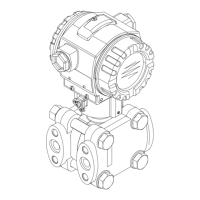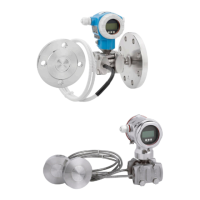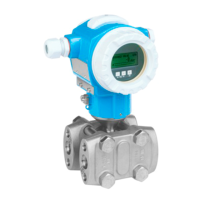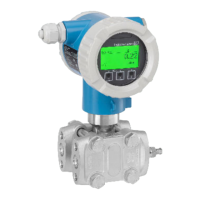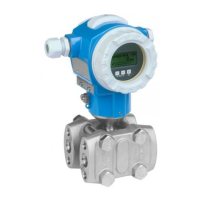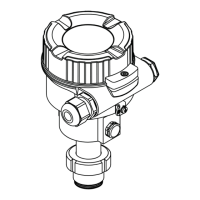Deltabar FMD71, FMD72 Electrical connection
Endress+Hauser 27
6.3.2 Supply voltage
L
WARNING
Supply voltage might be connected!
Risk of electric shock and/or explosion!
‣
When using the measuring device in hazardous areas, installation must comply with
the corresponding national standards and regulations as well as the Safety Instructions.
‣
All explosion protection data are given in separate documentation which is available
upon request. The Ex documentation is supplied as standard with all devices approved
for use in explosion hazardous areas.
Electronic version Jumper for 4 to 20 mA test signal in
"Test" position (delivery status)
Jumper for 4 to 20 mA test signal
in "Non-test" position
4 to 20 mA HART, version for
non-hazardous areas
13 to 45 V DC 12 to 45 V DC
Measuring a 4 to 20 mA test signal
A 4 to 20 mA test signal may be measured via the positive and test terminal without
interrupting the measurement. The minimum supply voltage of the device can be reduced
by simply changing the position of the jumper. As a result, operation is also possible with a
lower supply voltage. To keep the measured error below 0.1 %, the current measuring
device should exhibit an internal resistance of <0.7Ω. Observe the position of the jumper in
accordance with the following table.
Jumper position for test
signal
Description
A0019992
• Measurement of 4 to 20 mA test signal via the positive and test terminal:
possible. (Thus, the output current can be measured without interruption via
the diode.)
• Delivery status
• Minimum supply voltage: 13 V DC
A0019993
• Measurement of 4 to 20 mA test signal via positive and test terminal: not
possible.
• Minimum supply voltage: 12 V DC
6.4 Connection conditions
6.4.1 Cable specification
Preferably use twisted, screened two-wire cable.
6.4.2 Cable specification for transmitter connection
• Endress+Hauser recommends using twisted, shielded two-wire cables.
• Terminals for core cross-sections 0.5 to 2.5 mm
2
(20 to 14 AWG)
• The cable outer diameter depends on the cable entry used.

